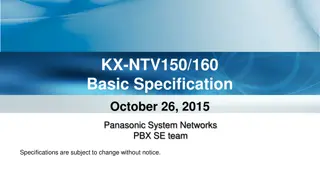
Insights into Mercantile Models and Order Management Cycles
Explore the intricacies of mercantile models and order management cycles from the merchant's perspective. Delve into the steps of the order management cycle in e-commerce, from order planning to post-sales service. Understand the importance of cost estimation, pricing, order receipt, and more in optimizing online operations. Gain valuable insights for maintaining a competitive edge in the digital marketplace.
Download Presentation

Please find below an Image/Link to download the presentation.
The content on the website is provided AS IS for your information and personal use only. It may not be sold, licensed, or shared on other websites without obtaining consent from the author. If you encounter any issues during the download, it is possible that the publisher has removed the file from their server.
You are allowed to download the files provided on this website for personal or commercial use, subject to the condition that they are used lawfully. All files are the property of their respective owners.
The content on the website is provided AS IS for your information and personal use only. It may not be sold, licensed, or shared on other websites without obtaining consent from the author.
E N D
Presentation Transcript
Mercantile Models from the Merchant s Perspective BY DR.U.PRIYA HEAD AND ASSISTANT PROFESSOR BON SECOURS FOR WOMEN, THANJAVUR
Mercantile Models from the Merchants Mercantile Models from the Merchant s Perspective Perspective Introduction Introduction To order to deliver cycle from the merchant perspective has been managed with an eye towards standardization and cost. This is based on assumption that an organization must create a set of operating standard for service and production. They perform to those standards while minimizing the cost. To fully realize and maintain a competitive advantage in the online environment it is necessary to examine the order management cycle (OMC) that also includes the traditional order to delivery cycle.
STEPS OF OMC (i) Order planning & Order generation. (ii) Cost estimation & pricing. (iii) Order receipt & entry. (iv) Order selection & prioritization. (v) Order Scheduling (vi) Order fulfillment & delivery. (vii) Order billing & account/payment management. (viii) Post sales service.
1. ORDER PLANNING & ORDER GENERATION Order planning leads to order generation. Orders are generated in a no. of ways in the e-commerce environment. The sales force broadcasts ads (direct marketing), sends personalized e-mail to customers (cold calls), or creates a WWW page
2. COST ESTIMATION & PRICING. Pricing is the bridge between customer needs & company capabilities. Pricing at the individual order level depends on understanding the value to the customer that is generated by each order, evaluating the cost of filling each order; & instituting a system that enables the company to price each order based on its value & cost
3. ORDER RECEIPT & ENTRY. After an acceptable price Quote, the customer enters the order receipt & entry phase of OMC. This was under the purview of departments variously titled customer service, order entry, the inside sales desk, or customer liaison.
4. ORDER SELECTION & PRIORITIZATION Customer service representatives are also often responsible for choosing which orders to accept and which to decline. Not, all customers orders are created equal; some are better for the business.
5. ORDER SCHEDULING In this phase the prioritized orders get slotted into an actual production or operational sequence. This task is difficult because the different functional departments- sales, marketing,, customer service, operations, or production- may have conflicting goals, compensation systems, & organizational imperatives: Production people seek to minimize equipment changeovers, while marketing & customer service reps argue for special service for special customers.
6. ORDER FULFILLMENT & DELIVERY In this actual provision of the product or service is made. It involves multiple functions and locations.
7. ORDER BILLING & ACCOUNT/PAYMENT MANAGEMENT. After the order has been fulfilled & delivered, billing is given by finance staff. The billing function is designed to serve the needs and interests of the company, not the customer.
8. POST SALES SERVICE This phase plays an increasingly important role in all elements of a company s profit equation: customer, price, & cost. It can include such elements as physical installation of a product, repair & maintenance, customer training, equipment upgrading & disposal. The newest technologies are direct deposit of payroll, on-line bill payment and telephone transfers




